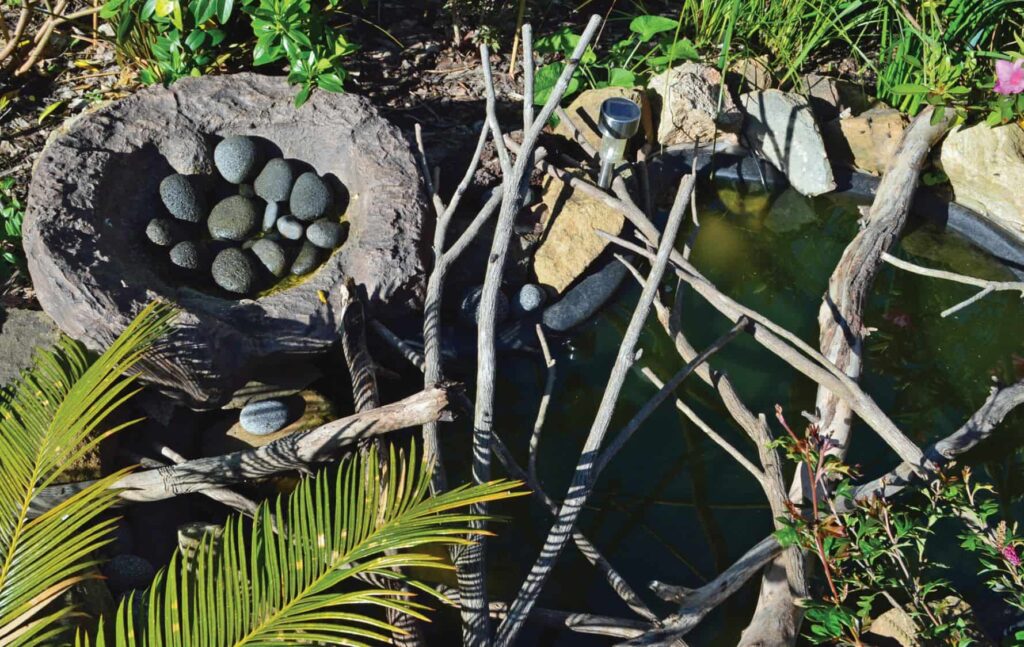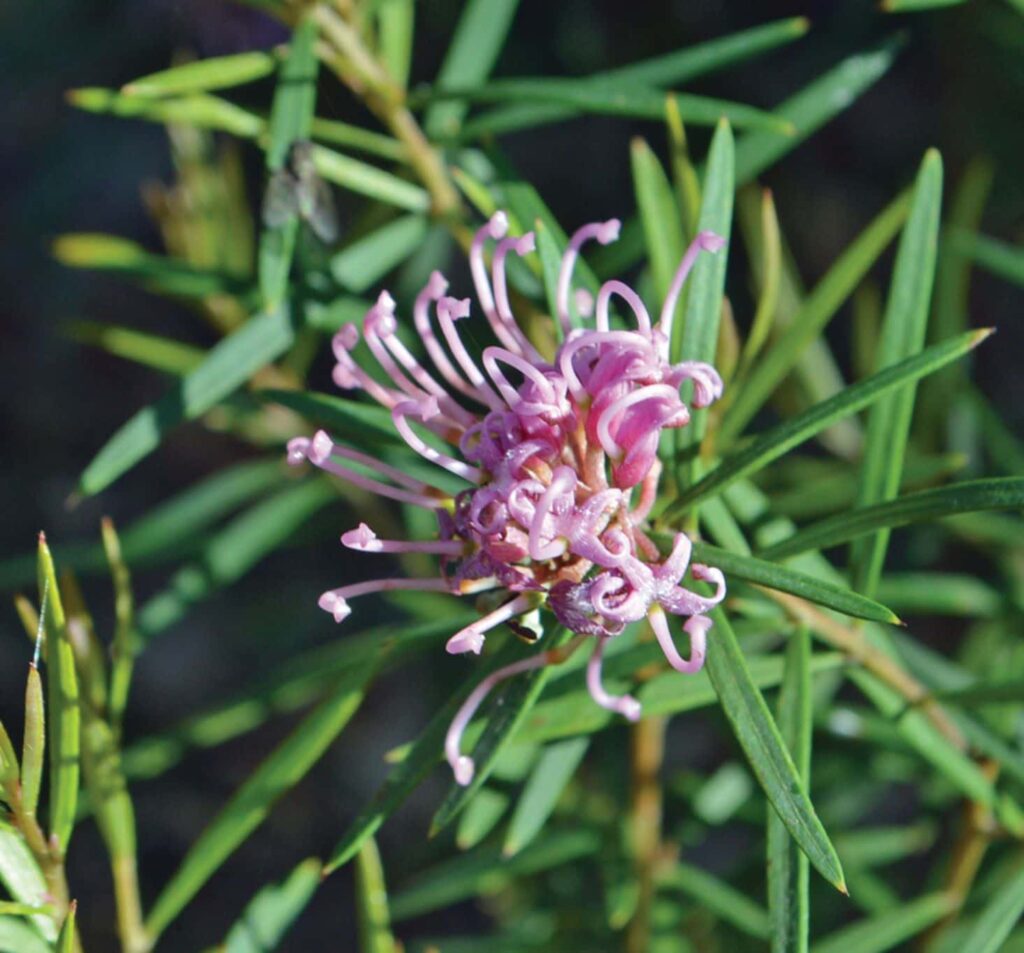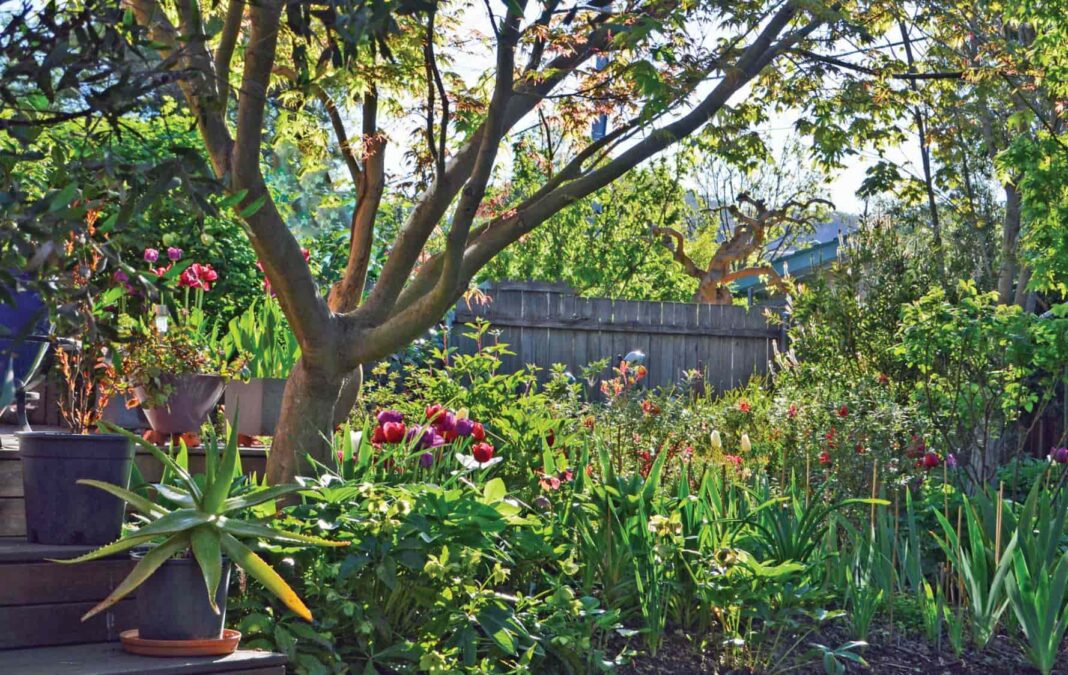This beautiful garden on a 468sqm block in Dickson is thoughtfully tended by Dominique and her son Leigh, a professional horticulturist.
What was a typical 1960s garden when Dominique purchased the property in 1999, i.e. with privet, ivy, conifers and a seemingly never-ending compliment of black plastic, has been transformed into a serene oasis with a whole lot of sandy loam, organic matter, mulch and TLC.
There is a diversity of plant life from Azaleas to Kangaroo Paws and everything in between – all forming a surprisingly complimentary palette – a clever mix of structure and plant groupings has been utilised alongside spontaneity and a pleasant disregard for typical conventions.

Dominique explained they wanted flowers throughout the seasons and to create a welcoming space for wildlife and beneficials.
If the resident gang-gang cockatoos grabbing a morning snack before my arrival and the frequently swooping magpies are anything to go by, they have absolutely achieved this design brief.
Being free of lawn has enabled the inclusion of numerous ornamental trees including a pink flowering form of Crepe Myrtle, Lipstick Maples, Gingko, Ash, Acacia, Olive and more.
Over the years, possums utilising these beauties as their local highway has proven a challenge, but Leigh said it’s a love-hate relationship he’s learnt to live with (if they aren’t screeching like Tasmanian Devils or mowing tree foliage, they are rather adorable).

Many of the plants are attractive to beneficial insects such as Philotheca myoporoides ‘Profusion’, Grevillea ‘Amethyst’, and Leptospermum ‘Mesmer Eyes’.
P. myoporoides ‘Profusion’, commonly known as Wax Flower, is a lovely native shrub with pale pink flowers appearing in late winter and spring and useful in partly-shaded positions.
Grevillea ‘Amethyst’ is a hybrid between G. confertifolia and G. sericea, growing as a small, rounded shrub with delightful mauve flowers appearing during spring and popular with native bees and nectar-feeding birds.
G. ‘Amethyst’ grows well in full sun to lightly shaded positions, with at least moderate drainage and is ideal in rockeries and cottage style gardens.
One of Leigh’s favourites Leptospermum ‘Mesmer Eyes’, is a hardy species of Tea Tree with show-stopping flowers appearing during late spring and tolerates hot, dry conditions and a range of soils.

Dominique has several raised planters utilising wasted space behind the garage, which are full of veg, herbs and berries.
Nearby, Leigh has a small but productive hothouse for propagation endeavours.
A small pond with several crossing branches on top is home to fish and frogs as well as being a water source for birds – the branches protect the fish from opportunistic fly-bys.
The garden is irrigated using Shrubblers, handy emitters with adjustable, water-saving nozzles for a range of applications.
Beds are topped up with mulch twice annually, including from deciduous trees in the garden, creating a more natural look.
Organic products such as Dynamic Lifter, Seasol, and Blood and Bone are applied each growing season and new plantings also have gypsum and imported sandy-loam topsoil added.
For more like this:



